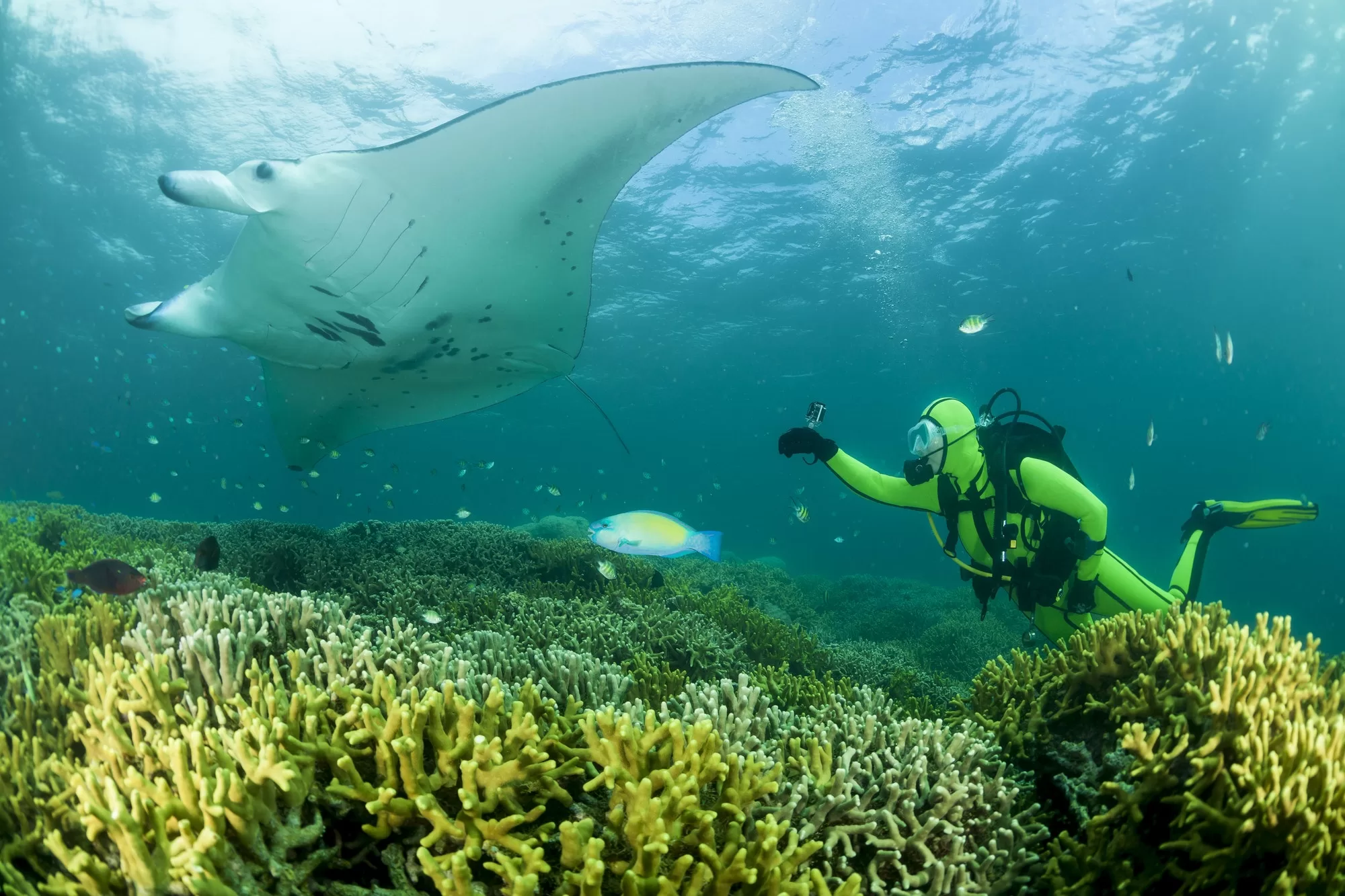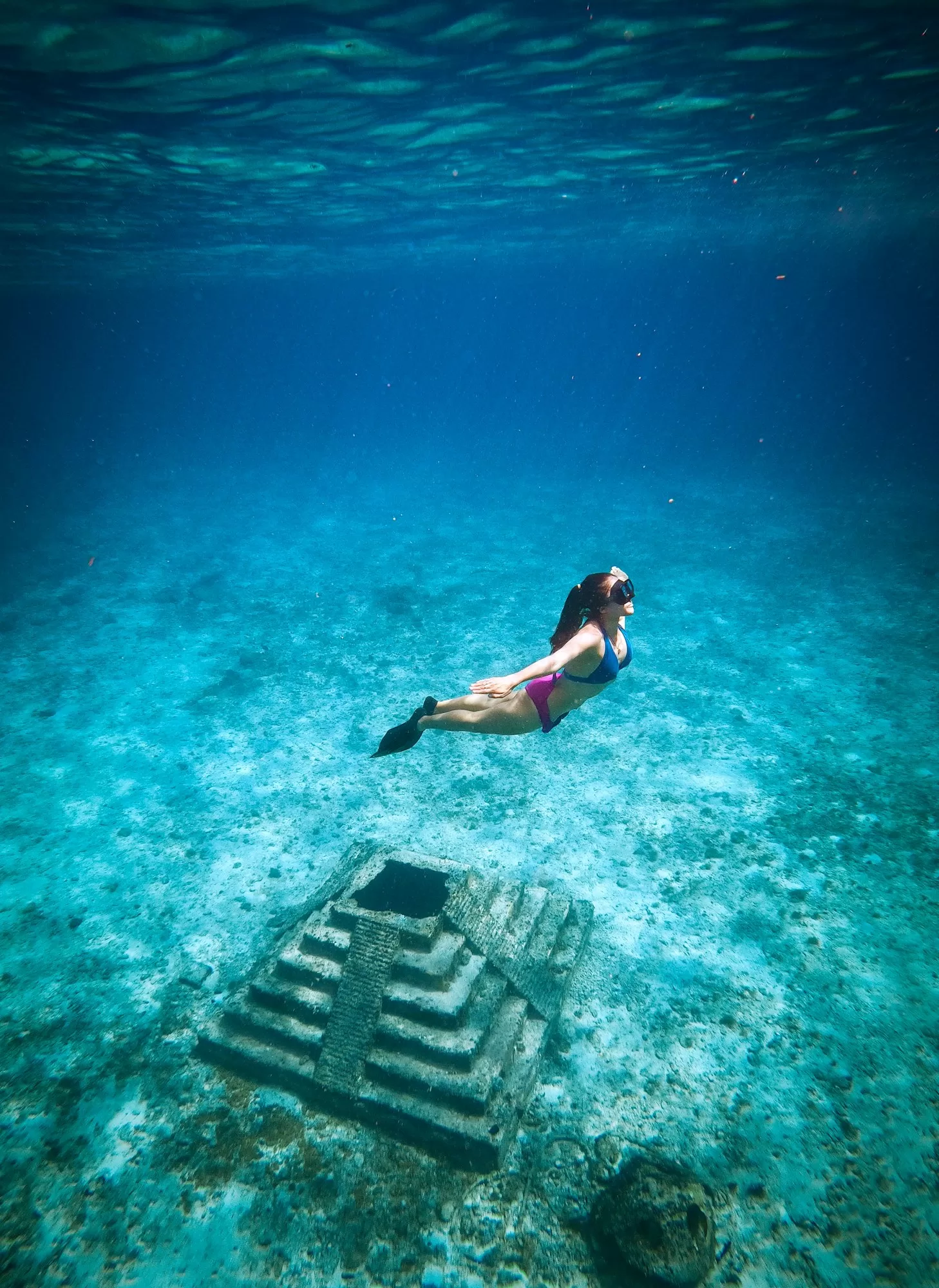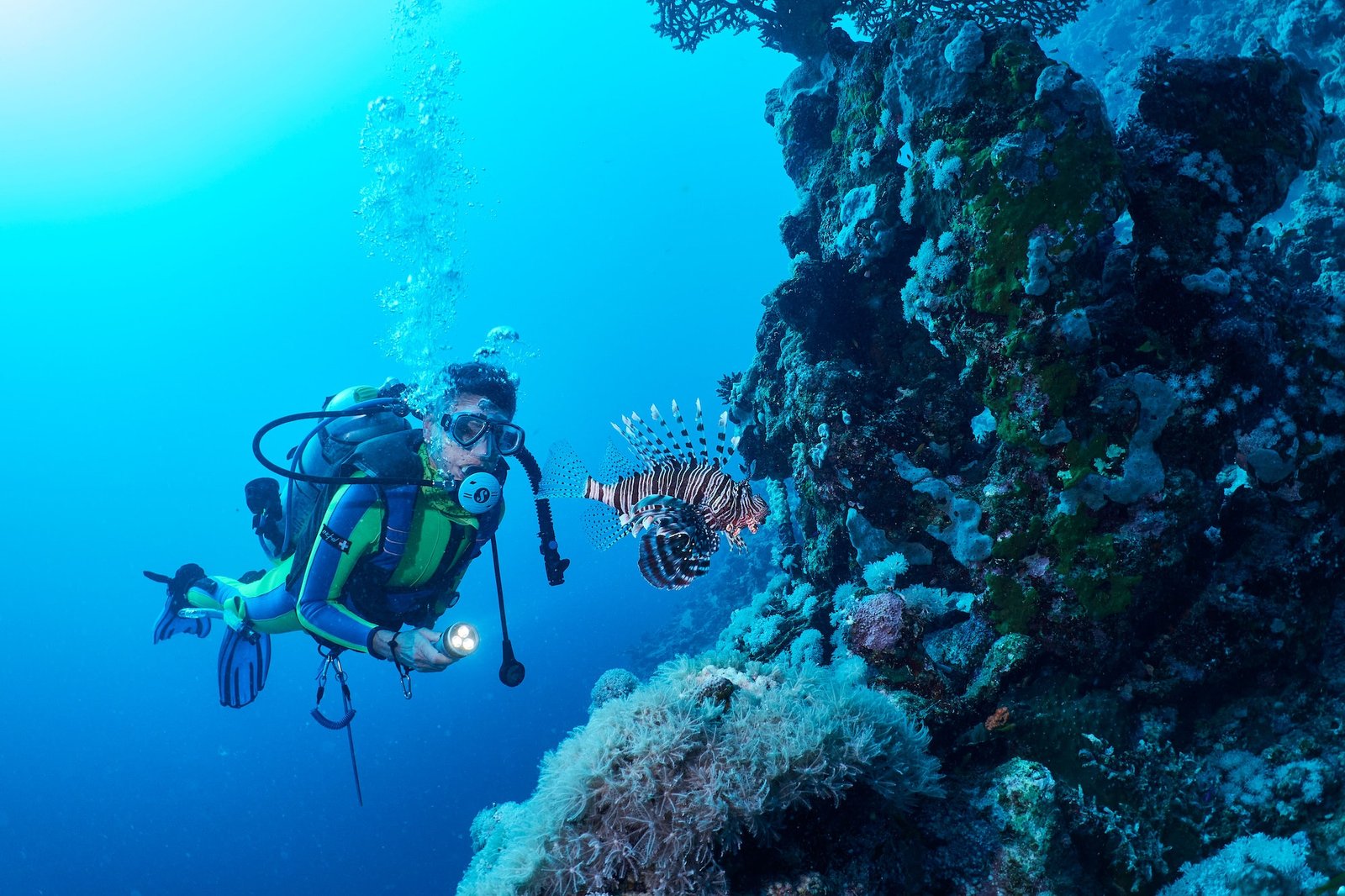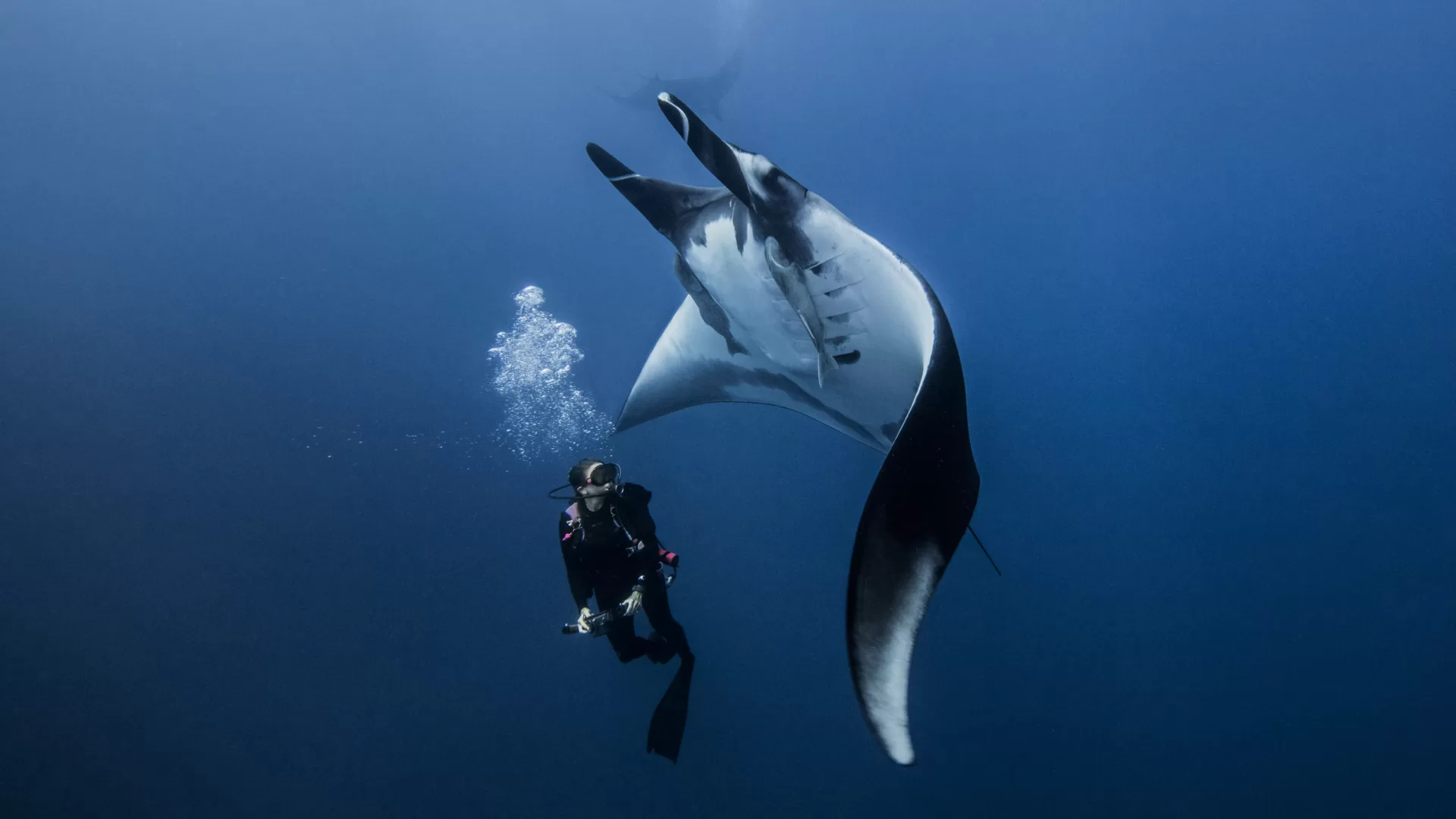Imagine gliding through the tranquil waters of Hawaii, accompanied by the majestic manta rays, these gentle giants of the sea. Manta rays, known for their impressive size and graceful movements, are a highlight of Hawaii’s rich marine biodiversity. Diving with these creatures in the Hawaiian Islands offers an experience like no other, where you can witness their serene beauty up close. Hawaii, renowned for its commitment to sustainable and respectful wildlife tourism, provides a unique opportunity to interact with these magnificent creatures in their natural habitat. This adventure not only allows for an unforgettable encounter but also fosters a deeper appreciation for the ocean’s wonders and the importance of preserving them. As we delve into the world of manta rays, prepare to be mesmerized by their elegance and the ethereal experience of swimming alongside them in Hawaii’s crystal-clear waters.
The Magic of Manta Rays
Manta rays are truly captivating, with their expansive wingspans that can reach up to 23 feet and their distinctive, graceful swimming style. These filter-feeders primarily consume plankton, which they funnel into their open mouths as they glide through the ocean. Unlike stingrays, manta rays do not have a stinger, making them harmless to humans. They are known for their intelligence, exhibiting curiosity around divers and snorkelers.
In Hawaiian marine ecosystems, manta rays play a crucial role. They help maintain the health of the coral reefs by consuming large quantities of plankton, which in turn, supports a balanced marine environment. Additionally, their presence attracts ecotourism, contributing significantly to Hawaii’s economy.
Contrary to some misconceptions, manta rays are gentle and pose no threat to humans. They do not have the ‘stinger’ that many associate with stingrays. These serene creatures are not aggressive and are known to be quite playful and curious around humans. Understanding these facts dispels fears and fosters a respectful and awe-inspiring interaction between humans and manta rays, making diving with them an enlightening experience that highlights the harmony possible between humanity and marine life.
Best Spots for Manta Ray Dives in Hawaii
Hawaii, a paradise for divers, offers some of the world’s best spots for manta ray encounters, with the Kona Coast on the Big Island standing out as a premier location. The Kona Coast is renowned for its high visibility and calm waters, making it an ideal habitat for manta rays and a perfect spot for divers of all levels. The area is famous for its “Manta Ray Night Dive,” which provides a surreal experience of watching these creatures gracefully dance through the water, illuminated by the lights from diving torches.
Seasonally, manta ray sightings in Hawaii can vary, but the Kona Coast boasts a year-round presence of these majestic creatures. The highest chances of encounters are often in the warmer months, from April to October, when the ocean is teeming with plankton, attracting manta rays in large numbers. However, their presence throughout the year offers opportunities for divers and snorkelers anytime they visit.
The underwater terrain around the Kona Coast is as diverse as it is beautiful, featuring a mix of sandy bottoms, coral reefs, and lava formations. These varied landscapes provide an excellent backdrop for manta ray dives, enhancing the overall experience. The water conditions are generally mild with little current, offering a safe and enjoyable environment for observing these gentle giants. The clarity of the water in these areas is exceptional, often providing visibility of up to 100 feet, allowing divers and snorkelers to witness the manta rays in all their glory, along with a rich variety of other marine life that inhabit these vibrant waters.
Preparing for Your Dive
Embarking on a dive with manta rays is an exhilarating experience, but it requires careful preparation to ensure safety and respect for marine life. Whether you’re a seasoned diver or a beginner, understanding the necessary equipment and certifications is crucial.
Equipment and Certifications:
- Diving Certification: Ensure you have a basic open water diving certification from a recognized organization. This certifies that you have the essential skills and knowledge for safe diving.
- Diving Gear: Standard gear includes a wetsuit, mask, snorkel, fins, and a diving tank. A dive light is especially important for night dives to observe manta rays.
- Buoyancy Control Device (BCD): A properly fitted BCD helps manage your buoyancy, crucial for a comfortable and safe dive.
Tips for Beginners:
- Familiarize with Equipment: Ensure you are comfortable with your gear. Practice in controlled environments like swimming pools if you’re a beginner.
- Stay Calm: Keep your movements gentle and steady. Rapid movements can startle marine life and disrupt the natural environment.
- Follow Your Guide: Always dive with a guide and stay close to your group.
Safety Guidelines:
- Health Check: Be aware of your physical health conditions. Issues like ear infections or respiratory problems can be exacerbated underwater.
- Environmental Awareness: Be mindful of your surroundings to avoid damaging coral reefs or disturbing marine habitats.
Ethical Considerations and Best Practices:
- Respectful Interaction: Maintain a safe distance from the manta rays. Touching or chasing them can cause stress and harm.
- No Flash Photography: If you’re taking photos, avoid flash as it can disorient and disturb the manta rays.
- Environmental Conservation: Be an eco-conscious diver. Avoid leaving any trash in the ocean and support local conservation efforts.
Proper preparation not only ensures a safe and enjoyable dive but also helps in preserving the natural beauty and integrity of the marine ecosystem. As divers, we have the responsibility to protect the ocean and its inhabitants, ensuring that future generations can also experience the wonder of diving with manta rays.
What to Expect During the Dive
Diving with manta rays in Hawaii is an experience that transcends mere words, immersing you in a world of grace and tranquility beneath the waves. As you descend into the blue, the first thing that strikes you is the sheer size and elegance of these magnificent creatures. The way they glide effortlessly through the water, with wingspans that can stretch wider than a car, is an awe-inspiring sight.
A Typical Manta Ray Dive Experience:
As you settle into the dive, you’ll often find yourself surrounded by a serene, underwater ballet. Manta rays are known for their unique feeding behavior, where they perform graceful somersaults to funnel plankton into their wide-open mouths. This dance, especially prevalent during night dives, is mesmerizing to witness. The manta rays, illuminated by the diver’s lights, which attract plankton, seem almost ethereal in their movements.
Behavior of Manta Rays:
Manta rays are incredibly gentle and curious creatures. They often approach divers, sometimes even playfully interacting with the bubbles from scuba gear. Despite their size, they are known to be very aware of their surroundings, skillfully maneuvering around divers without ever making contact.
Personal Anecdote:
I remember my first dive with manta rays; it was like entering a different world. One particularly curious manta, which we nicknamed “Glider,” came so close that I could see the patterns on its underbelly, each as unique as a fingerprint. It’s moments like these – sharing a peaceful connection with such majestic animals – that remind us of the beauty and fragility of our oceans.
During the dive, it’s important to remain still and let the manta rays control the interaction. Their peaceful demeanor and the surreal calmness of the water create an almost meditative experience. This is not just a dive; it’s an encounter that stays with you, a vivid reminder of our connection to the vast and mysterious marine world.
Conservation and Respect for Marine Life
The conservation of manta rays is critical, not only for their survival but for the health of the entire marine ecosystem. These majestic creatures face threats from overfishing, habitat loss, and the impacts of climate change. In Hawaii, conservation efforts are in place to protect manta rays, emphasizing the importance of sustainable interactions between humans and these gentle giants.
Divers play a vital role in these conservation efforts. By choosing responsible tour operators that adhere to ethical wildlife interaction guidelines, divers support practices that prioritize the well-being of manta rays. Additionally, divers can contribute to conservation by educating others about the importance of these creatures, participating in citizen science projects, and supporting conservation initiatives.
Sustainable tourism in Hawaii includes regulations and guidelines that ensure minimal impact on manta ray habitats. This includes controlled diving activities, respecting wildlife viewing distances, and prohibiting the touching and feeding of marine life. By adhering to these practices, divers help preserve the natural behavior and habitat of manta rays, ensuring that future generations can also experience the wonder of these magnificent creatures.
Conclusion
Diving with manta rays in Hawaii is an experience that leaves an indelible mark on your soul. It’s an encounter that goes beyond mere observation, allowing you to connect with the natural world in a profound and respectful way. As you emerge from the waters, the memory of these gentle giants gliding gracefully through the ocean depths stays with you, a reminder of the beauty and fragility of our planet’s marine life.
I encourage every diver to approach this experience with awe and reverence. Respect for these creatures and their habitat is paramount. By diving responsibly and consciously, we can all contribute to the preservation of these natural wonders. The encounter with manta rays is not just an adventure; it’s a transformative experience that deepens our appreciation for the ocean and its incredible inhabitants. Let’s cherish and protect this experience, ensuring that the dance of the manta rays continues to captivate hearts and minds for generations to come.
FAQs:
- Q: Do I need any special diving experience to dive with manta rays in Hawaii?
- A: Basic open water diving certification is usually sufficient for manta ray dives. However, some specific dives, like night dives, may require advanced certification or prior diving experience.
- Q: Are manta ray dives in Hawaii safe?
- A: Yes, manta ray dives are generally safe, especially when conducted with reputable dive operators who follow safety guidelines and respect wildlife.
- Q: What is the best time of year to dive with manta rays in Hawaii?
- A: Manta rays can be seen year-round in Hawaii, but the best visibility and conditions are typically from April to October.
- Q: How close can I get to the manta rays?
- A: While manta rays often approach divers, it’s important to maintain a respectful distance and avoid touching them. Follow your guide’s instructions for safe and ethical interaction.
- Q: What should I do if a manta ray swims directly towards me?
- A: Stay calm and still. Manta rays are known to be curious but harmless. They usually swim around divers without making contact.
- Q: Can I take photos or videos during the dive?
- A: Yes, you can take photos or videos, but it’s advised to use cameras without flash to avoid disturbing the manta rays.
- Q: Are there any conservation efforts I can support to help protect manta rays?
- A: Yes, you can support local conservation organizations in Hawaii that work towards manta ray protection. Participating in awareness programs and citizen science projects also helps.
- Q: Is it guaranteed that I’ll see manta rays during my dive?
- A: While sightings are highly likely in popular spots like the Kona Coast, wildlife encounters can never be guaranteed. It’s important to go with realistic expectations and enjoy the overall diving experience.




